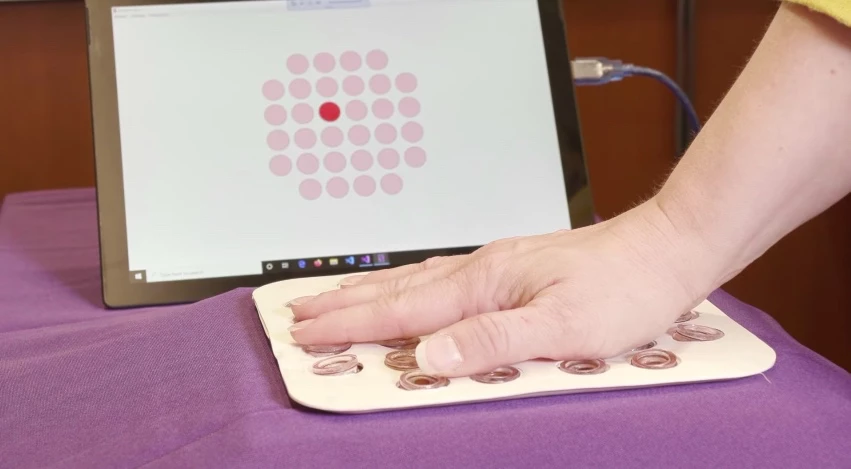Although virtual reality technology may allow users to see and hear computer-generated environments, the extent to which people can feel those worlds is still quite limited. That could be about to change, though, thanks to what's being called an "epidermal VR" system.
Developed by scientists at Illinois' Northwestern University and the City University of Hong Kong, the experimental technology incorporates a thin, soft, flexible and slightly-tacky elastomer patch that temporarily adheres to the user's skin.
Embedded within that patch is an array of wirelessly-powered, wirelessly-controlled, disc-shaped electronic actuators. A 15 by 15-cm (5.9-inch) prototype presently contains 32 of these devices, although it is hoped that as the actuators get smaller, it will be possible to pack more of them into a given area.
The idea is that when an epidermal VR patch is activated – such as by a VR game – some of the actuators will vibrate against the wearer's skin, stimulating that person's sense of touch in a specific area. Each of the actuators is designed to resonate most strongly at 200 cycles per second, the frequency at which human skin exhibits maximum sensitivity.

It's also possible for one person to remotely-control another person's patch in real time, using a touchscreen interface on a smartphone or tablet. If the "sender" were to finger-trace an X on their screen, for instance, the "recipient" would feel that X being traced onto their skin, beneath the patch. Once developed further, it is hoped that this functionality could allow video-chat participants to virtually touch one another via their devices.
Additionally, the system has already been used to allow a lower-arm amputee to gauge the grip strength of his artificial hand.
The researchers started by installing pressure sensors on the fingertips of US Army veteran Garrett Anderson's prosthetic hand, plus they placed an epidermal VR patch on his residual arm stump. When he subsequently grasped objects with the hand, the sensors correspondingly activated the actuators in the patch – the greater the amount of pressure being applied by the fingers, the more the actuators vibrated. This let him feel the firmness level of the hand's grasp, within his arm.
"We leveraged our knowledge in stretchable electronics and wireless power transfer to put together a superior collection of components, including miniaturized actuators, in an advanced architecture designed as a skin-interfaced wearable device," says Northwestern's Prof. John A. Rogers, who led the study along with Prof. Yonggang Huang. "We feel that it’s a good starting point that will scale naturally to full-body systems and hundreds or thousands of discrete, programmable actuators."
A paper on the research was recently published in the journal Nature.
Sources: Northwestern University, City University of Hong Kong via EurekAlert




